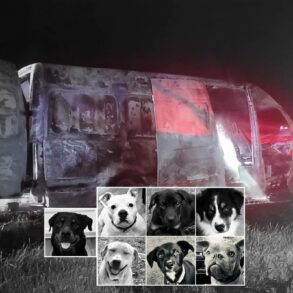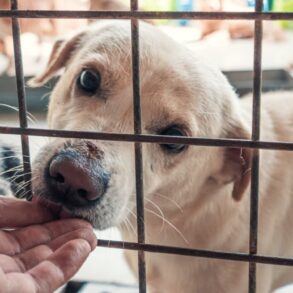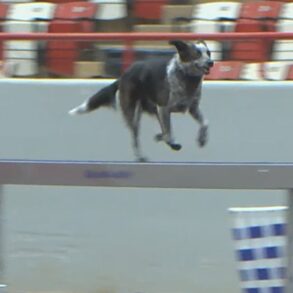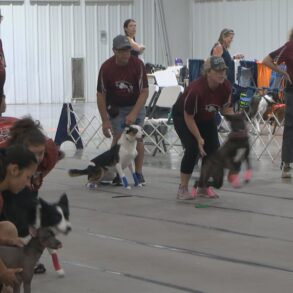
The modern work environment can be very stressful, and this can often lead to conflicts and various levels of aggressive behaviors between workmates. Research has shown that these workplace conflicts reduce the psychological and physical health of employees, resulting in absenteeism and poor performance that can cost billions of dollars each year. One of the ways to cope with this problem has been to allow employees to bring their pet dog or cat to work.
Dogs and Cats on the Job Site
Several studies have provided data that shows increased job satisfaction when employees bring pets to the workplace, the practice produces positive emotional changes and improves interpersonal behaviors. Part of the benefit of pets at work includes an overall reduction in conflict and aggressive behaviors among employees. The problem with this form of therapeutic intervention is that bringing pets to the workplace makes the environment seem less professional, less clean, and less safe. In addition, some people are allergic to pets, and some have phobic reactions to them. As a result, many employers have banned pets from their buildings.
Carey J. Fitzgerald at State University of New York at Oneonta recognized the benefits brought by pets to the workplace as well as the potential drawbacks. However, Fitzgerald also knew about research indicating that simply thinking about one’s pet dog or pet cat can provide psychological relief from negative social interactions. Fitzgerald wondered if just having a photo of your pet in your workspace might provide some benefits, similar to having your pet with you for emotional support. Of course, a photo avoids the downsides of having the actual animal in the workplace.
A Photo in Your Cubicle
To test this, two studies were conducted. The first involved 201 undergraduate students. If they owned a pet dog or cat, they were asked to bring in a photograph of it.
In the first study, the participants entered a typical workplace cubicle with fabric-covered walls roughly five feet high (1.5 m). They sat at a small desk, which contained a computer monitor that could be used to display a photograph. They were randomly assigned to one of five conditions where the monitor could be blank, or could display the image of the participant’s own pet dog or cat, or contain a random image of a dog or cat.
Making People Angry
Next, the participants were given a writing task and asked to write two short essays designed to provoke feelings of anger or aggression. The first essay asked: “Briefly describe three to five things that make you most angry.” The second essay asked: “Describe in detail the one situation that has made you the most angry you have been in your life, and describe it such that a person reading the description would become angry just from hearing about the situation.”
After the writing task, the participants answered a questionnaire containing items designed to measure their anger and aggressive responses to various workplace scenarios. For example, they were asked about how likely they were to respond verbally or physically if a co-worker had just labeled them with an insulting term (sample insults were given).
Dogs but Not Cats
The results were striking. Participants who were assigned to the condition in which the photo of their pet dog was visible displayed significantly lower levels of anger and a significantly lower likelihood of retaliating verbally or physically as compared with the groups that saw a random dog or cat. None of these latter conditions was different from having no photo at all to view. Photos of your pet dog can reduce feelings of conflict in a workspace and reduce the likelihood of aggressive responses.
A Confirming Study
Although the results of the study were clear, Fitzgerald wanted a more direct measure of the degree of aggression and hostility, and so a second study was conducted. A new sample of 120 undergraduate students was used. The environment was the same, only the blank-screen condition was eliminated. Now the monitor could show either a participant’s pet dog, or pet cat, or a random dog or cat.
To arouse emotions involving conflict and anger, participants wrote two short essays on anger-arousing topics as they did in the first study.
A Chance to Measure Actual Aggression
Next, participants were subjected to a subterfuge, in which they felt that they were competing against another individual, and had the opportunity to inflict punishment on them in a sort of take-that! manner. Participants were told that they were competing against another person in a reaction time test. When a green box appeared on the computer screen, they were told they had to click on it as quickly as possible. Whoever clicked the box first was allowed to administer a white noise blast to the other player, which is unpleasant depending on its intensity and duration. Before each trial, the participant was allowed to select the intensity and duration of the white noise (the level of punishment). The participants didn’t know that no other individual was competing against them. To maintain the illusion, over the 25 trials, they “lost” five times and heard the unpleasant white noise blast through their earphones.
The neat thing about this study design: You can measure how aggressive the individual is feeling by noting the intensity and duration of the white noise that the participants chose while punishing their (non-existent) opponent for being slow. Despite the change in study design, the results were similar to the first study. In the presence of the photo of their pet dog, participants chose significantly lower punishing responses. No such reductions were found if it was the image of their pet cat present, or that of a random cat or dog.
Will a Photo of Your Dog Help at Your Workplace?
If you can’t have your pet dog with you as an emotional support animal at your job, you may feel some psychological benefits in the form of reduced feelings of conflict and aggression by having a photo of your dog with you in the workplace. Conversely, it appears that a photo of your pet cat won’t do much to ease any quarrelsome feelings or hostility that you may experience in your workplace.
Copyright SC Psychological Enterprises Ltd. May not be reprinted or reposted without permission.
This post was originally published on this site be sure to check out more of their content.









































